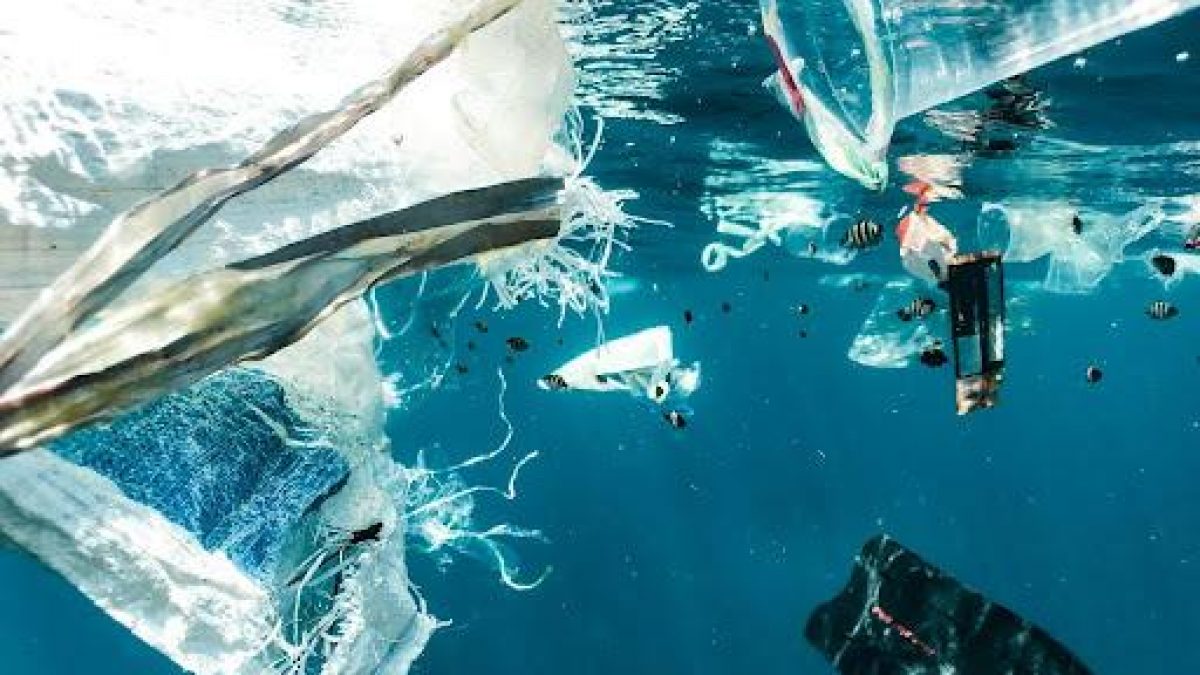By Nicole Howes—
Microplastics are an emerging topic of conversation, but what are they really and what happens to them in the ocean?
Microplastics can be classified as either primary or secondary microplastics. Primary microplastics are produced for commercial use such as body washes and scrubs whereas secondary microplastics are the result of larger plastic material such as water bottles being broken down into smaller particles. Microplastics are defined as plastic particles smaller than 5 mm, originating from both these primary and secondary sources. While most of us are not actively disposing of plastic into the ocean, through street runoff, washing machines and many more avenues, microplastics enter almost all bodies of water.
An image of a sea turtle getting caught in large plastic fishing nets may be the first thing that comes to mind when talking about plastic ocean pollution. However, on a smaller scale, microplastics arguably cause more harm to ocean ecosystems as they have been seen to negatively affect multiple levels of the marine food web from phytoplankton to fish.
Studies show that exposure to high concentrations of microplastics affects photosynthesis levels in phytoplankton and nutrient uptake in zooplankton. While we may not be directly eating phytoplankton, they are at the bottom of the ocean food chain providing food to zooplankton, which in turn are eaten by fish. They are also essential due to their photosynthetic abilities providing oxygen to the environment in addition to acting as carbon pumps, storing carbon in their bodies. Zooplankton are essential in the marine organism food web and a disruption to this ocean food web by microplastics would have a critical impact on all the above predators which we consume.
Along with a possible decrease in their prey, larger fish are also susceptible to the harmful impact of microplastic bioaccumulation that are uptaken by smaller fish and plankton. Microplastics then ultimately end up in our own bodies when we consume fish, thus providing a full circle of plastic pollution.
However, hope is not all lost, as there is increasing research into the ability of microbes to degrade microplastics. As plastic has become so prevalent in our daily lives, ending up in landfills and oceans, microbes have adapted and found ways to use plastic as a carbon source for energy. Landfills and wastewater tend to be highly diverse with an abundance of available nutrients and minerals. However, ocean plastic degradation faces the issue of lower temperature and low microbial biomass inhibiting plastic elimination at fast rates.
Currently I am among those researching marine microbes’ ability to degrade microplastics using biochemical techniques. A large gap in knowledge is the ability to accurately track the carbon in microplastics such as polyethylene in microbes that degrade it. Knowing the proteins responsible for degradation and trying to optimize the metabolism of plastic is a great avenue to help eliminate the abundance of microplastics in our oceans.
This highlights the need for UN Sustainable Development Goal 14 , which calls on nations to “conserve and sustainably use the oceans, seas and marine resources,’ as currently many factors such as plastic pollution, overfishing, and ocean warming have created an ocean emergency. Our largest ecosystem’s health is rapidly declining, and we need to act now to protect it.
There are also ways to reduce our own contribution to microplastics including using glass tupperware instead of plastic, wearing clothing with natural fibers, and using reusable shopping bags. EcoWatch has some great tips to reduce the amount of plastic we use in our daily lives. Some other examples include switching out cleansers that contain microbeads and replacing tea bags with loose leaf or paper tea bags. While almost all of us will continue to use plastic, the simple act of reusing water bottles or tupperware makes a difference.
Another suggestion made by the UN to tackle plastic pollution is to participate in community ocean clean ups, this both increases community engagement in creating a cleaner ocean and gives an opportunity to visibly see how almost every plastic item can end up in the ocean. Thus the microplastics produced by our plastic waste are causing a large harmful impact, but we have the power to save our oceans!

